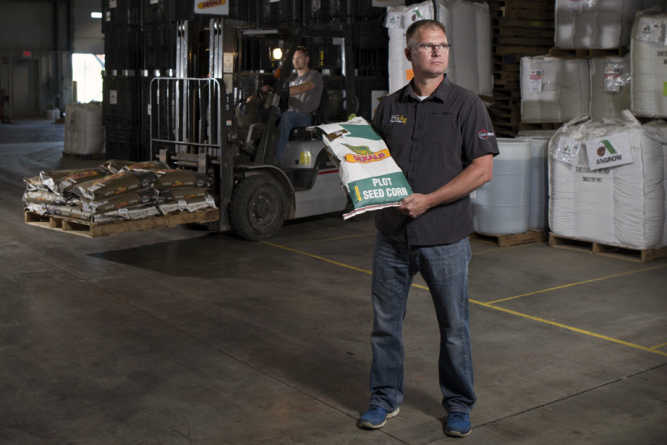Home > North Dakota > North Dakota Technology > How Precision Agriculture is Helping North Dakota Farmers
How Precision Agriculture is Helping North Dakota Farmers
In partnership with: North Dakota Department of Agriculture
 The last decade has seen a rapid evolution in technology. We can access the world with the swipe of a cellphone screen, and we can video chat with family or business associates on the other side of the world. In agriculture, producers can use global positioning systems to determine how much to water specific acres of cropland.
The last decade has seen a rapid evolution in technology. We can access the world with the swipe of a cellphone screen, and we can video chat with family or business associates on the other side of the world. In agriculture, producers can use global positioning systems to determine how much to water specific acres of cropland.
In some ways, technology advancements are best seen in the agriculture industry. Precision agriculture helps farmers break their fields into smaller portions and areas to manage each section of the field individually, so plant life receives specific care, instead of treating entire fields the same way.
Farmers are utilizing new advancements like variable rate technology, unmanned aerial vehicles, GPS and mapping technology to give them a better sense of their fields.
“These technologies are allowing producers to more accurately understand variation in their fields while being able to adjust ‘on the go’ for that variation,” says Preston Sundeen, director of the Dakota Precision Agriculture Center at Lake Region State College. “The quality of the finished product improves as well as the efficiency of fuel, pesticides and fertilizers, all while improving soil health.”
Teaching Technology
As new technologies are developed, North Dakota wants to ensure its farmers know how to take advantage of them. Lake Region State College received a U.S. Department of Labor workforce grant to train and educate farmers in precision agriculture practices, offering an associate of applied sciences degree in precision ag. The Precision Agriculture Center, along with offering traditional for- credit classes, also hosts producer seminars, noncredit classes, and industry presentations geared around agronomy and technology.
“Most of our classes utilize traditional textbooks, but all of these ag classes either have a hands-on component or experience components built in to provide students with the real-world type of work they will be performing,” Sundeen says.
Major Advancements Improve Crops
Sundeen says the major technical advancements that he’s seen in the past decade are higher adaptation of auto steer, which has led to decreased overlap and greater ability to monitor the equipment, and section control that aids in decreased expenses and better soil management by not overapplying chemicals or fertilizer.
“We’re also seeing major advancements in acquiring data,” he says. Today’s equipment can monitor the smallest details regarding planting, fertilizing, spraying and harvesting applications. This data can then be stored in various agriculture software to provide analytics that help increase yield or improve return on investment.
Data layers can be laid on top of each other to compare yield with variety, soil characteristics, topography and fertilizer treatment. Weather data can be more field- specific through in-field weather stations that allow producers to compare yields of fields, knowing, for example, which got an extra inch of rain during a crucial time.

Variable Rate Technology and the Future
Variable rate technology is a form of seeder, spreader, sprayer and planter technology that has developed over the last 10 years. This mechanization helps reduce overseeding, overspraying and overspreading on farms by tracking the equipment with GPS location and preventing redundant use of product.
This technology can include assisting farmers with what they’ve already done, or it can connect with different maps and use GPS to determine areas that need more seed or pesticides and herbicides. The major benefit to farmers is reducing their product usage, which will save overhead costs.
“With new technology, we can do more with less,” says Shane Sharpe, precision ag manager of Plains Grain and Agronomy, a full-service agronomy center and premium dealer for precision planting located in Enderlin. “We can plant less because we’re doing a better job of monitoring nutrient levels and applying those nutrients where and when they are needed.”
Sharpe says these technologies are only going to continue to improve and to enhance agriculture production in the United States.
“We’re going to see improvements in planter performance. Seeding at the right time in the spring is crucial, and we’re going to see faster seeding equipment and improved knowledge of chemical fertilizers.”



